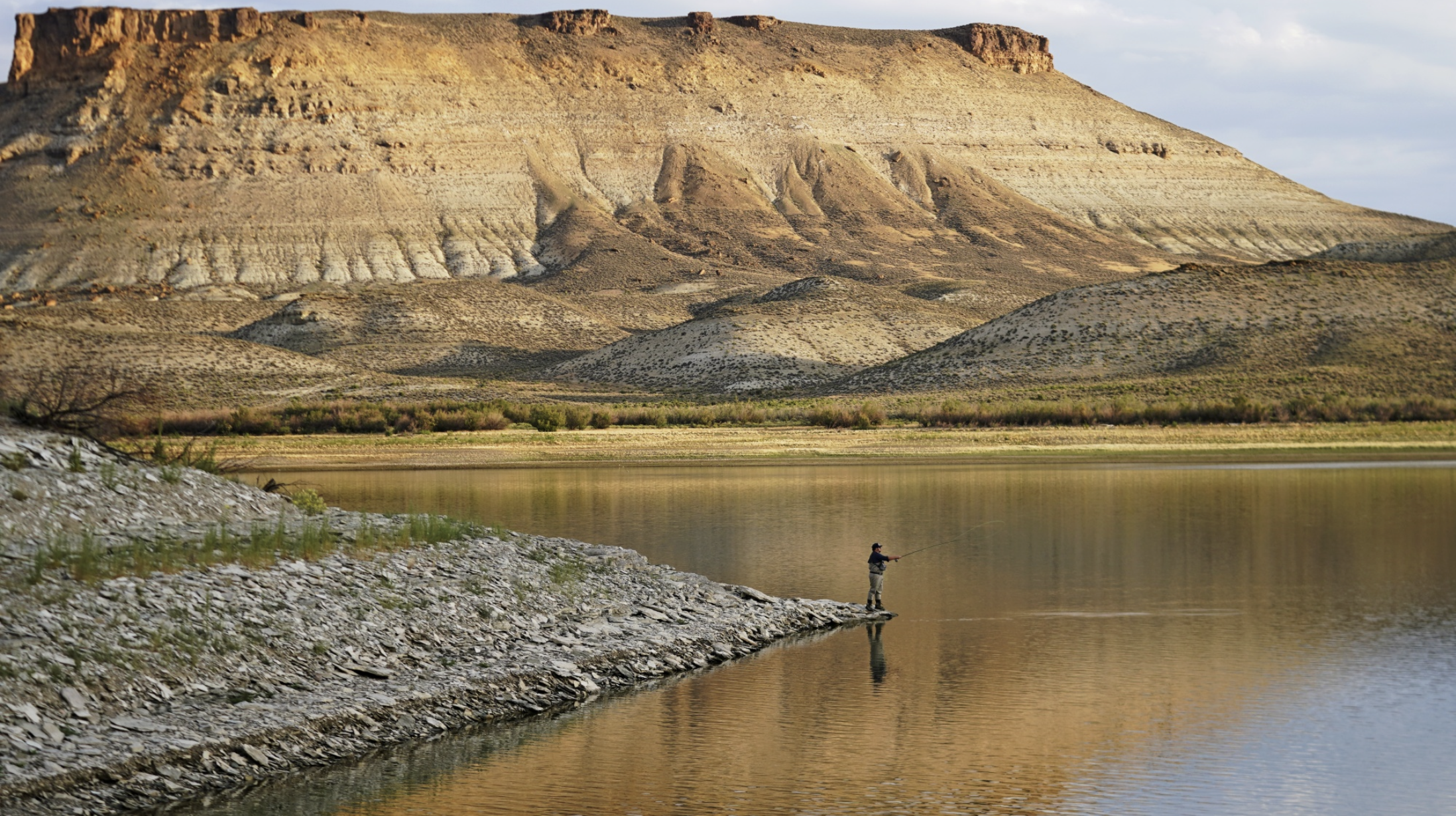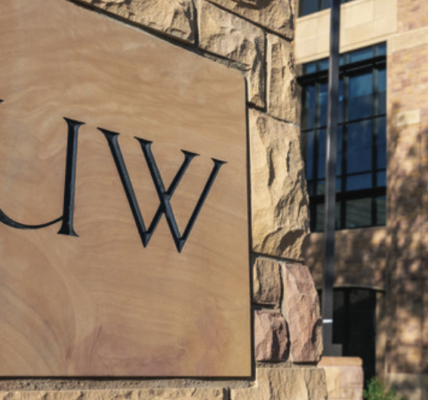
By Dustin Bleizeffer, WyoFile.com
The Bureau of Reclamation suspended extra “drought response” releases from Flaming Gorge Reservoir Tuesday at the request of Wyoming and the other three Upper Colorado River Basin states.
The reservoir, which straddles the Wyoming-Utah border, was tapped for an extra 500,000 acre-feet of water starting in May 2022 to help ensure that water levels downstream at Lake Powell don’t drop low enough to threaten hydroelectric power generation at Glen Canyon Dam this year. An estimated 463,000 acre-feet of extra water was delivered before officials suspended the plan this month — two months ahead of schedule.
The “drought response” action met its purpose, according to officials. Plus, Mother Nature has mitigated worries of Lake Powell dipping to critical levels — for now.
Above-average snowpack and rainfall across much of the West this winter has improved the 2023 outlook for Lake Powell and provides an opportunity to begin to replenish Flaming Gorge, which may be tapped again if conditions demand it, according to the Upper Colorado River Commission, which represents Wyoming, Utah, Colorado and New Mexico.
Actual hydrologic conditions indicate that continuing releases from Flaming Gorge per the 2022 plan are no longer needed to protect the critical elevations at Lake Powell,” the UCRC stated in a Feb. 27 letter to the BOR. “Taking this action now will provide greater flexibility in consideration of future [Drought Response Operations Agreement] operations if dry conditions persist or worsen.”
Flaming Gorge is the third-largest reservoir in the Colorado River Basin system. Its primary purpose is to serve as a backup to help balance water storage, particularly for the upper basin region. Lake Powell is also a storage reservoir in the upper basin. The BOR previously tapped Flaming Gorge for extra flows in 2021 to the tune of 125,000 acre-feet of water. And before winter brought substantial snow and rain this season, locals worried that calls for supplemental water from the reservoir might continue indefinitely, transforming the popular recreation area.
“I’m happy that they’re suspending the releases,” Green River resident and Flaming Gorge angler Chris Taylor said. “I understand why [the extra releases] are necessary. But it’s a sad thing to watch the place where I grew up, you know, get to a level that I’ve never seen before in my lifetime.”
The unusually wet winter doesn’t mean the Colorado River crisis is over, however.
The West is still in the grips of a 23-year drought, and experts warn that climate change and growing demand will continue to sap the Colorado River. In California, for example, where heavy snowpack in the Sierras and a series of “atmospheric rivers” promise to refill reservoirs, three to four more similar seasons would be necessary to end the drought, water expert Newsha Ajami of the Lawrence Berkeley National Laboratory told Salon.
Some climate experts are skeptical that the moist winters will continue, instead describing what’s happening in the West as a transition to a period of “aridification,” and projecting that Lake Powell and Lake Mead might never refill.
Coming to terms with that dire outlook, Colorado River stakeholders continue to negotiate how they will live with less water. In fact, observers say the upper basin states, in their call to suspend Flaming Gorge releases, are staking their position for future negotiations with lower basin states.
As the BOR tapped Flaming Gorge to help support Lake Powell it also plans to hold 480,000 acre-feet in Lake Powell so that it can be released later this summer to help supplement Lake Mead in the lower basin.
Although permissible under the Drought Response Operations Agreement, Wyoming and the upper basin states worry that such actions essentially allow the lower basin states to become reliant on upper basin water storage via emergency drought measures, which Wyoming officials say could jeopardize future water rights.
“These are issues that have been known since the 2022 DROA was initiated in May of last year and we all understood would need to be worked out,” Wyoming State Engineer Brandon Gebhart told WyoFile. The DROA is currently being revised, and “we need to work towards a resolution quickly with the other parties,” he added.
The upper basin states don’t use their full allotment of Colorado River volumes while water use in the lower basin outstrips what Mother Nature provides. Even while agreeing to conserve more water and find water use efficiencies, the upper basin states still want to retain their Colorado River rights for future growth, Dorsey & Whitney water law attorney Gage Zobell said.
“Wyoming and the other upper basin states are trying to put themselves in a position that, when those [DROA] negotiations happen, they’re not going to be left having to feed this addiction to water in the southern states,” Zobell said.
Essentially, the lower basin states can draw enough water out of Lake Mead to force extra releases out of Lake Powell in the upper basin and avoid having to take water conservation measures.
“By doing that, they kept triggering us to have to release out of Flaming Gorge, and up in the other upper basin reservoirs,” Zobell said.
Meantime, a strong spring snowmelt promises to raise water elevations at Lake Powell while Lake Mead is projected to continue to shrink, according to the BOR’s most recent outlook.
“It highlights the continuing tensions between the upper basin’s biggest reservoir and the lower basin’s biggest reservoir,” Great Basin Water Network Executive Director Kyle Roerink said. “What this really comes down to is the upper basin believes that these balancing releases are a de facto means for mining Lake Powell water.”





